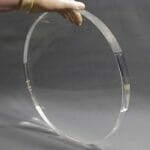Engineering and technical products, by their very nature, can sometimes be complex in their configuration and specification. So too can the terminology used to describe or name the product, and a term recognised and understood by one person can mislead or confuse another.
Statistics from Fleishman-Hillard show that 89% of people begin their selection and purchasing process via online search engines. Therefore, the specific search terms used by an individual can have a significant impact on the results they see, and in turn the product they may decide to purchase.
This article from Reich Drive Systems David Edwards highlights the importance of terminology and why it is important to ensure that the supplier and customer are both speaking the same language.
For those involved within the power transmission sector, the word “Coupling” is readily identified as a unit with two hubs, or a hub and a flange, with a flexible element. The prime function of this assembly is to transmit power from a prime mover to a driven piece of equipment. The word “Coupling” however is used within the railway industry, and of course in relation to pipe fittings, so those working within those sectors will visualise something completely different.
Confusion can also arise in certain instances where the features of a product can lead to it being defined as something else. As an example, because a Reich coupling installed between an engine flywheel and a gearbox has the ability to absorb torsional vibrations from the engine, it can sometimes be referred to as an engine damper. Although there is no doubt that a correctly specified and installed flexible coupling will “dampen” the engine vibrations, by correct definition an engine damper, also known as a harmonic damper, is a completely different product used on the crankshaft end of an engine.
There are also Flywheel “Dampers” available, often incorporated into Dual Mass Flywheels, however they don’t share the full range of features of the Reich power transmission coupling. Reich couplings are specifically selected for each application, with a flexible element and with a specific stiffness, to optimise the torsional vibration range. These products are also specifically selected to transmit the necessary torque between the engine and gearbox / alternator etc and incorporate a plug in design to connect the driven equipment to the driver.
David Edwards provides further examples of terminology confusion: “Speaking to colleagues in the world of industrial brakes and clutches, they are often asked to provide a clutch solution when actually a brake is required, or vice versa. Similarly, Reich provides a range of torque limiters, which are sometimes incorrectly described by others as clutches, couplings, or slip clutches. In these instances, the debate is whether a coupling with torque limiting properties is a coupling or a torque limiter.”
The solution to the terminology issue is not to expect customers to accurately describe the products accurately, but for reputable suppliers to apply their expertise and question the user about what they want a product to do and why. In this way the correct product, specification and name will always be identified, and the end user will be happy with the solution, irrespective of what they decide to call it.
With a history spanning over 70 years, REICH has built up unrivalled expertise in the design and manufacture of drive couplings for use across a wide range of industries and applications. The company has earned an enviable reputation not only for the quality and performance of their product range, but also for their ability to provide application and customer specific solutions through the company’s D2C (Design to Customer) philosophy.






